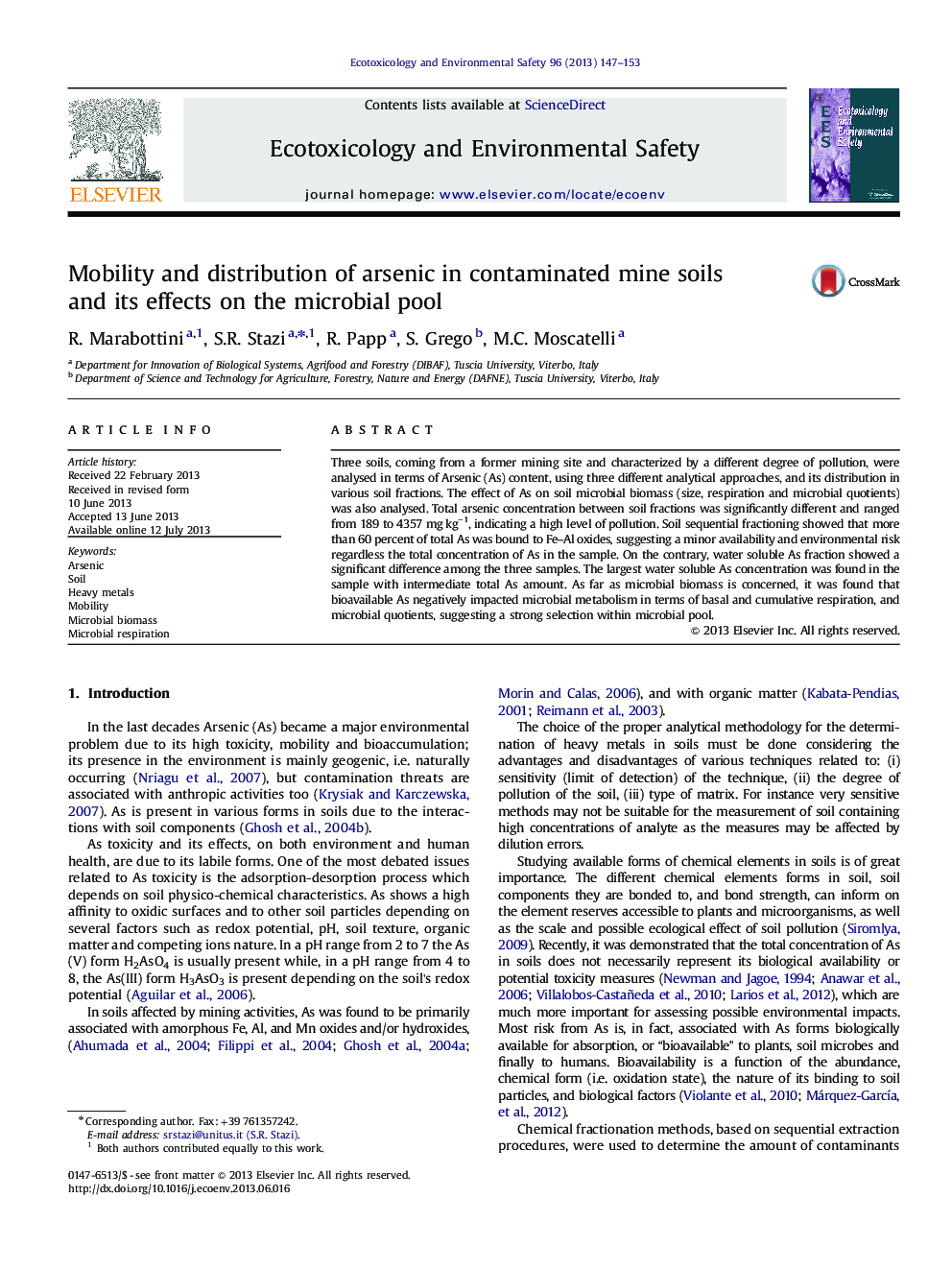| Article ID | Journal | Published Year | Pages | File Type |
|---|---|---|---|---|
| 6312355 | Ecotoxicology and Environmental Safety | 2013 | 7 Pages |
Abstract
Three soils, coming from a former mining site and characterized by a different degree of pollution, were analysed in terms of Arsenic (As) content, using three different analytical approaches, and its distribution in various soil fractions. The effect of As on soil microbial biomass (size, respiration and microbial quotients) was also analysed. Total arsenic concentration between soil fractions was significantly different and ranged from 189 to 4357 mg kgâ1, indicating a high level of pollution. Soil sequential fractioning showed that more than 60 percent of total As was bound to Fe-Al oxides, suggesting a minor availability and environmental risk regardless the total concentration of As in the sample. On the contrary, water soluble As fraction showed a significant difference among the three samples. The largest water soluble As concentration was found in the sample with intermediate total As amount. As far as microbial biomass is concerned, it was found that bioavailable As negatively impacted microbial metabolism in terms of basal and cumulative respiration, and microbial quotients, suggesting a strong selection within microbial pool.
Related Topics
Life Sciences
Environmental Science
Environmental Chemistry
Authors
R. Marabottini, S.R. Stazi, R. Papp, S. Grego, M.C. Moscatelli,
